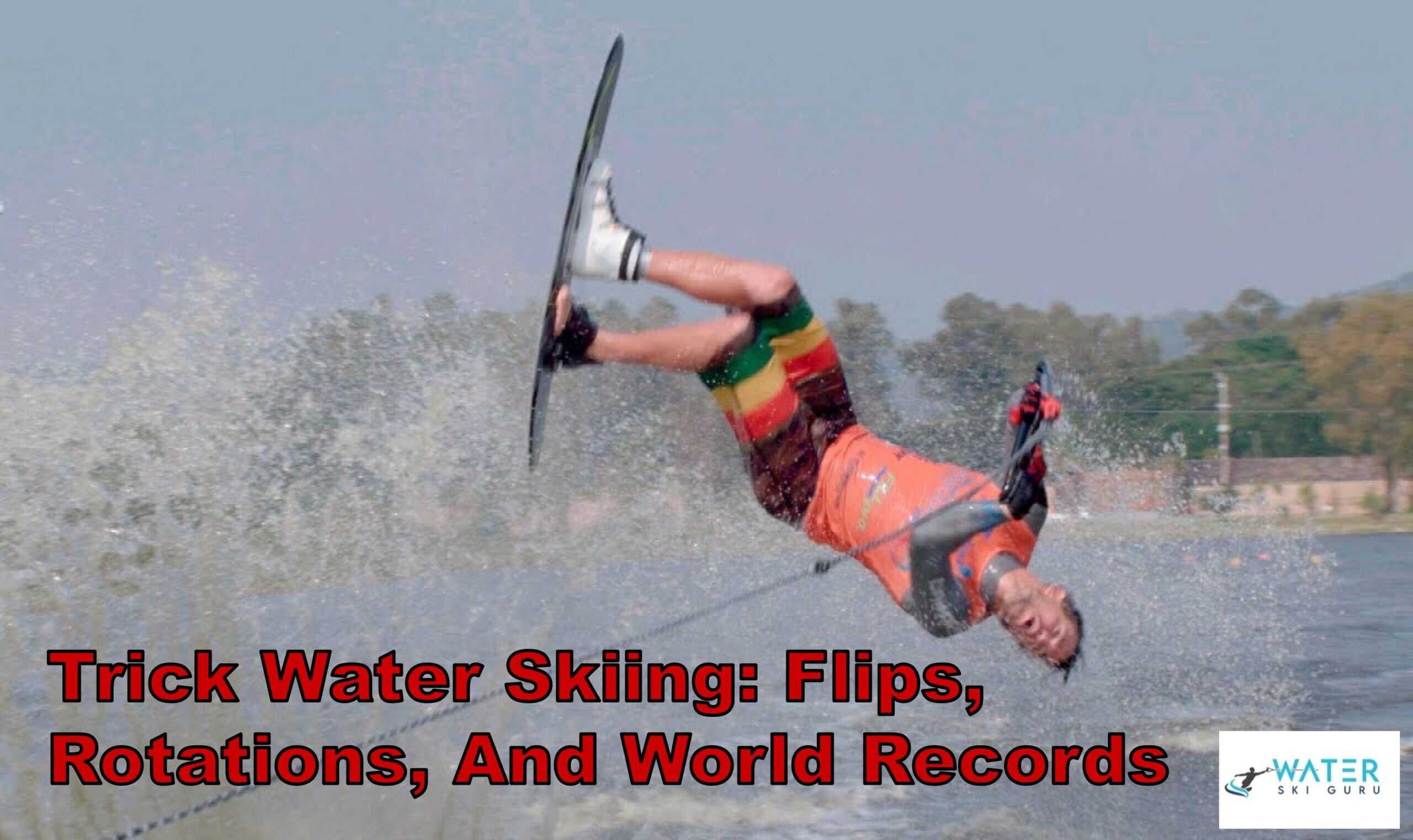Trick water skiing is one of the most exhilarating and challenging sports out there. With short, wide, and flat skis, no fins, and a variety of tricks such as rotations, flips, and wake tricks, trick water skiing requires a lot of skill and training.
In a tournament, skiers have to complete two passes of 20 seconds each, with rope length being free-range. It’s a sport that demands both physical and mental agility, as well as an unwavering commitment to mastery.
Did you know that the world records for trick water skiing are held by Erica Lang and Alexi Zharnasek, who scored 10,850 and 12,570 points respectively? These impressive records demonstrate the level of dedication and skill required to excel in this sport.
However, trick water skiing is not without risks, as injuries such as torn hamstrings and groins can occur. Despite this, trick water skiing continues to attract adrenaline junkies and thrill-seekers from all over the world, who are drawn to the challenge and excitement of this high-octane sport.
In this article, we’ll explore the equipment and rules involved in trick water skiing, as well as the training and technique required to excel in this sport. We’ll also delve into the world of competition and records, and take a closer look at some of the most impressive feats ever achieved in the world of trick water skiing.
Equipment and Rules
I use short, wide, flat skis with no fins when trick water skiing, and I’m aware of the equipment specifications, rules, and limitations that come with this sport.
The trick handle and single trick ski are essential pieces of gear that help me execute my rotations, flips, and wake tricks. The ski length ranges from 39-46 inches (0.99m-1.2m) long and is 11 inches/28cm wide, providing me with stability and control as I perform my tricks.
As a trick water skier, I know that I must have a swimming ability and be cautious of my surroundings. We perform in a course with two buoys 100ft apart, and timing starts with the first distinct movement.
I also understand that I can only do a maximum of 6 flips per pass, and the points scored before a fall still count. Being knowledgeable about the equipment and rules is crucial to achieving a high score and staying safe while performing these exhilarating tricks.
Training and Technique
Observing other skiers and studying their techniques has helped me improve my performance on the surface trick category, like when I saw a fellow skier use their arms to maintain balance during a wake 360. I realized that incorporating arm movements into my routine would help me maintain balance as well and execute tricks with more precision. In addition to observing others, I have also been focusing on strength training to improve my overall performance. This includes exercises like squats, lunges, and core workouts to improve my stability and control on the water.
Another important aspect of trick water skiing is body positioning. Proper body positioning is crucial for executing tricks with precision and avoiding injuries. I have been working on maintaining a low center of gravity and keeping my arms and legs close to my body during tricks. This helps me maintain control and balance, especially during flips and rotations. By combining strength training and proper body positioning, I have seen a significant improvement in my performance and feel more confident on the water.
| Strength Training | Body Positioning |
| Squats | Low center of gravity |
| Lunges | Arms and legs close to body |
| Core Workouts | Proper alignment during flips and rotations |
| Balance exercises | Maintaining control and balance |
| Endurance training | Avoiding injuries and improving overall performance in gymnastics requires consistent practice and dedication to proper technique and form. |
Competition and Records
Competing against other skiers and striving to break personal bests has motivated me to push myself harder and improve my skills on the water. Strategy planning is a crucial component of any competition, and trick water skiing is no exception.
Before a tournament, I carefully consider my strengths and weaknesses, as well as the conditions of the water and the wind. I develop a game plan that includes which tricks I will perform, in what order, and how I will incorporate them into my two passes. Mental preparation is also essential, as I visualize myself executing each trick flawlessly and focus on staying calm and confident throughout the competition.
Breaking world records is the ultimate goal for many trick water skiers, and achieving this feat requires dedication, perseverance, and a bit of luck. I have immense respect for the current record holders, Erica Lang and Alexi Zharnasek, who have set the bar incredibly high with their impressive scores.
To break a world record, I know that I must train harder than ever before, constantly pushing myself to improve my technique and increase my point total. But I also understand that there are factors beyond my control, such as the weather or the condition of the water, that can affect my performance. Despite these challenges, I am determined to continue striving towards my goal and pushing the boundaries of what is possible in trick water skiing.
Frequently Asked Questions
What are some common injuries experienced by trick water skiers?
As a seasoned trick water skier, I know firsthand the risks involved. Injuries range from torn hamstrings to groins. Prevention strategies include proper warm-up and conditioning, while recovery methods involve rest and rehabilitation.
How does wind affect a skier’s trick preferences?
As a trick water skier, wind preferences play a crucial role in my performance. Experienced skiers can adjust their tricks according to the wind speed and direction, while beginners may struggle. Skill level and adaptability are key to success in this sport.
What is the role of an observer in trick water skiing?
As a trick water skier, I rely on my observer to ensure my safety. Their role is crucial, from monitoring my performance to alerting the boat driver in case of any danger. Safety measures are paramount in this exhilarating sport.
Are life vests required during trick water skiing tournaments?
Life vests are an important safety regulation during trick water skiing tournaments. As an experienced skier, I understand the risks involved and always prioritize safety. It is crucial to follow all regulations to ensure a successful and safe competition.
How does toe tricking differ from other trick categories in terms of risk assumption?
Toeing in trick water skiing is riskier because the skier assumes all the risks. Skill requirements for toe tricks are higher than other categories. Scoring system remains the same for all trick categories.
Conclusion
So, you want to become a trick water skier? Let me tell you, it’s not for the faint of heart. You’ll need to invest in a short, wide, and flat ski, no fins, and a whole lot of courage.
But who needs safety when you have flips, rotations, and world records to chase after? Sure, there are some risks involved, like tearing your hamstrings or groin, but what’s a little pain when you’re chasing after the ultimate thrill?
And if you’re lucky, maybe you’ll even make it onto the leaderboard alongside Erica Lang and Alexi Zharnasek. So, strap on your skis and get ready to ride the waves of excitement. Who knows, maybe you’ll even become the next trick water skiing legend.

